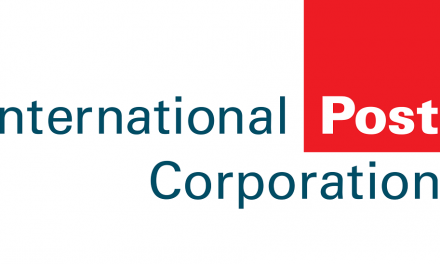
Responding to the Operational Challenge
Alan Barrie, Director Operations & Technology at the International Post Corporation, discusses the changing balance between letters and parcels in the current postal market The current changes that the posts are undergoing are probably the most significant and demanding of all that have gone before, and demand constant change at an operational level.
Most current postal operations were designed to deal with the boom in volumes from the 1970s through to the 1990s, when a lot of fixed capacity physical networks were put in place to deal with the huge expansion in volumes of letter mail.
There was also an important side specialisation that was developed to handle volume parcels (tracked environments, express products, higher priced products, etc), typically B2B, which was the first part of the postal business to be exposed to the full glare of open competition.
However, the era of booming letter volumes has gone into serious reverse, leading to over capacity; and while the B2B parcels segment is still showing healthy growth, the massive volume increase is now to be seen in B2C. Unfortunately, but inevitably, posts are discovering that the legacy networks they have been left with are the wrong ones to deal with today’s operational challenges, yet alone the right ones for tomorrow’s.
Keeping ahead of the letters’ cost curve

IPC director of operations and technology Alan Barrie
The major challenge in the letter mail business is therefore figuring out how to stay ahead of the cost curve. The do nothing scenario is unthinkable, with unit costs significantly increasing due to a combination of volume decline, delivery point growth and increasing labour costs.
Everyone thought that competition was going to be the big problem, but it did not really materialise as expected: the real problem has been substitution. New entrants built businesses to a large extent on transactional mail, which is the fastest contracting area thanks to e-substitution, so these new players in deregulated markets are also suffering and having to question their business models. This is putting additional pressure on an upstream model that was already creaking.
It is clear that transactional mail will continue to diminish as will letter volumes overall, but one glimmer of light in
an otherwise gloomy letters forecast is realising the full potential for media mail growth post recession when marketing budgets become healthier.
One would hardly be blamed for running a mile from this scenario in horror! But from an operational perspective one can look at this as one of the most exciting challenges in redesign and restructuring operations that any postal operator will have in a long time.
This is the perfect storm as postal operators face the key strategic dilemma: how do they create a sustainable letters platform at the same time as coping and thriving on the growth opportunities afforded by the e-commerce boom?
The impact of e-commerce
This e-commerce boom represents something of a Catch 22 situation in that if postal companies do not redesign letter mail operations to keep ahead of the cost curve, margins will shrink, and the still significant letter mail business, which has until now been the traditional cash cow, will instead become a huge cash drain on the organisation. This will then limit opportunities to expand and invest in the e-commerce segment.
Getting the fundamentals right in keeping ahead of the letter mail cost curve is therefore also essential for long term growth.
International capability becomes more important
Furthermore, the potential for cross border and intercontinental growth is now starting to be fully realised with some massive year-on-year growth trends as consumers, who are the engine room for this surge, increasingly adopting a borders-free mentality when doing their internet shopping.
Within posts, the international part of the organisation was typically seen as a five percent bit part player with domestic operations occupying most of the space on the agenda. This has already changed.
I predict that both geographical expansion and cross border commercial growth ambitions will be significant subjects for posts to assess as they reconsider their futures. Here at IPC we have already fundamentally shifted our emphasis and are co-ordinating activities with our member posts to ensure that the international e-commerce platform is complete so that they can make the most of this rapidly evolving opportunity.
Given that the international scene represents a significant upside in the new business model, so operationally and technologically this puts the focus on interoperability and standards ensuring that posts’ systems can speak to each other, and that the posts themselves can speak to e-tailers and directly to the buying customer in a joined up fashion.
As international e-commerce takes off, the dependency on domestic operational capability becomes even more important, and as domestic operations are transformed they must increasingly do so with the international interface in mind.
This was not the case in the past. Now domestic operations need to treat the international businesses as key customers in their own right. After all, international revenues probably stand up well against the revenues from a post’s top five domestic customers.
A sustainable national infrastructure and capacity model
Simply put, networks that were created in the 1990s are today excessive, inflexible and unsustainable. Technology can and should be applied to simplify the core sorting model.
Redefining the upstream element of national infrastructures will allow postal operators to fundamentally reevaluate how they organise work flows in their highest cost area, which is without exception delivery. How you organise and structure sort architecture and capacity will have a huge bearing on how efficiently you can re-engineer delivery capability.
Packets are not parcels
The flip side of the coin is that while most posts have been gearing themselves up to deal with parcels traffic, the boom in e-commerce is actually manifesting itself in what posts designate the large letters/small packets area.
Pure parcels, although significant in their own right, represent a relatively small percentage of the whole e-commerce segment. Most posts therefore find themselves with a large capability gap between sorting large letters, which is basically what most e-commerce packages are, and large parcels.
The current sorting and product model is not aligned with the reality of what the e-commerce community is demanding. Large parcels machines can sort about 8,000 pieces per hour, which sounds impressive and was adequate to cope with B2B parcels growth. However, current requirements are rather different: posts need to be able to sort at anything between 20,000 and 30,000 pieces per hour, and on a smaller industrial footprint.
The small packets segment also exposes another fundamental gap in operational capability within the mails businesses: whilst the parcels market benefits from the support of standard shipping software, creating consistent standards of information and presentation of items, small packet production is less consistent, even when produced and received within the sister postal retail networks.
Any operational process, postal or otherwise, will after all only be as effective as the quality of its input.
The need for an integrated network
Plugging these gaps brings about the biggest dilemma of all: in the 90s’ growth model posts were able to develop separate specialist networks to deal with letters and parcels, with small packets as an almost incidental add on to letters capability.
In the volume reducing deregulated letters environment, this is now an unsustainable luxury. Postal operators need to consider whether or not they should be driving a model of reintegration, thus merging streamlined letter mail capacities with the enhanced small packet fulfilment capabilities required to support the e-commerce boom.
The danger is getting caught in the middle: better to fully separate or to fully integrate than to compromise. This decision point will be strongly influenced by exactly how far down the separation route posts have gone in the past.
Ironically, it can be argued that the slower movers might have more options than the market leaders in this sense. It is worth restressing that upstream and sorting capability must be designed with delivery effectiveness as the clear priority. After all, since that is where both the USP and the most significant costs lie, so that is also where posts must get it absolutely right.
Conclusion
Rumours of the imminent demise of the postal industry may well be exaggerated, but the threat is very real if we do not collectively respond to the most significant challenge we have faced to date. Adaptability and change management are the new core competences which must be mastered as we all adapt to changing and challenging market demands.
Transactional mail will not come back, the role of the letter will continue to change, and e-commerce is growing apace, despite some fundamental operational deficiencies. Adapt and thrive or simply fade away seem to be the choices. I am confident that the postal world is up for the challenge. Time will tell.
Alan Barrie is Director Operations & Technology at the International Post Corporation.
This article appears in the March 2012 edition of Post&Parcel’s sister title, the quarterly print magazine Mail & Express Review. For subscription information, click here »










